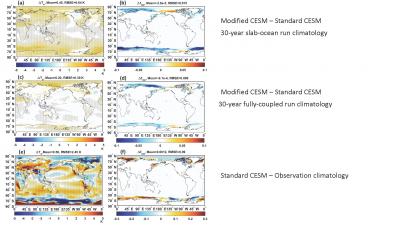Improved Representation of Surface Spectral Emissivity in a Global Climate Model and its Impact on Simulated Climate
This study describes an improvement to the representations of surface emission of infrared radiation in an earth system model. It also assesses the impact of such improvements on simulation, for both current mean state and future change scenario.
The improvement described in this study can be exported to other earth system models. It improves the fidelity of radiative coupling between the atmosphere and the underlying surface.
Leveraged on a global surface spectral emissivity data set developed by the same authors and sponsored by the same DoE project, this study improves the treatment of surface spectral emissivity in an earth system model and assesses the impact on simulated climate and climate change. Major impacts are:
- a ~1Wm-2 decrease of global-mean upward longwave flux at the surface and a comparable increase of latent heat flux.
- noticeable increase in mean-state surface temperatures over the Sahara desert and polar regions.
- a reduction of sea ice fraction in the polar regions. Together with (2), it alleviates the cold bias and overestimates of sea ice in the high latitudes in the original earth system model.
- sea-ice emissivity feedback is two orders of magnitude smaller than the surface albedo feedback. But the sign of such feedback can be dependent on the assumptions of sea ice morphology.

